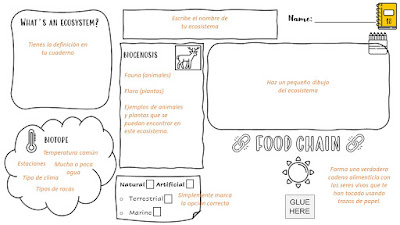Hello there! I know this is long overdue, but let me introduce myself. My name is Nancy and I am the English Language Assistant (ELA) this school year at CEIP Antonio Rodríguez Almodóvar. I am from California, USA and this is my fifth year working as an ELA.
The first few weeks were spent introducing myself and getting to know how things worked around the school. For the month of October, we focused on food and nutrients. Students learned about carbohydrates, proteins, vitamins, minerals, and healthy fats and why they are important for us. To finish off this unit, each student had to write a recipe and explain what ingredients were nutritious.
At the end of October I shared with the students different ways in which Halloween is celebrated in the States. I didn’t expect such enthusiasm for this holiday and was pleasantly surprised at the awesome decorations all over the school!
In the next unit we learned about the Earth. We started off with the layers of the atmosphere. I explained the five layers of the atmosphere and what can be found in each one. After, we moved on to the three climate zones and parts of the Earth. The class learned about the five imaginary lines that go across the Earth and represent the equator, the Tropics of Capricorn and Cancer, and the Arctic and Antarctic Circles.
Next on the agenda is winter holidays! I will definitely talk about Christmas and how my family and I celebrate this special holiday, but there are also other holidays the students may not be familiar with. I am looking forward to sharing these new (to them) holidays this week.
Time has flown by and I am enjoying every minute of it. I will try to do a better job with this blog to keep you up to date on everything going on with the 4th graders and all the material they are learning in their science classes. I hope you all have a great winter break with your loved ones!
P.S. To view any of the presentations linked to this blog post, just click on the underlined word and once the tab opens click on Presentación (top right) to begin the slideshow!


























